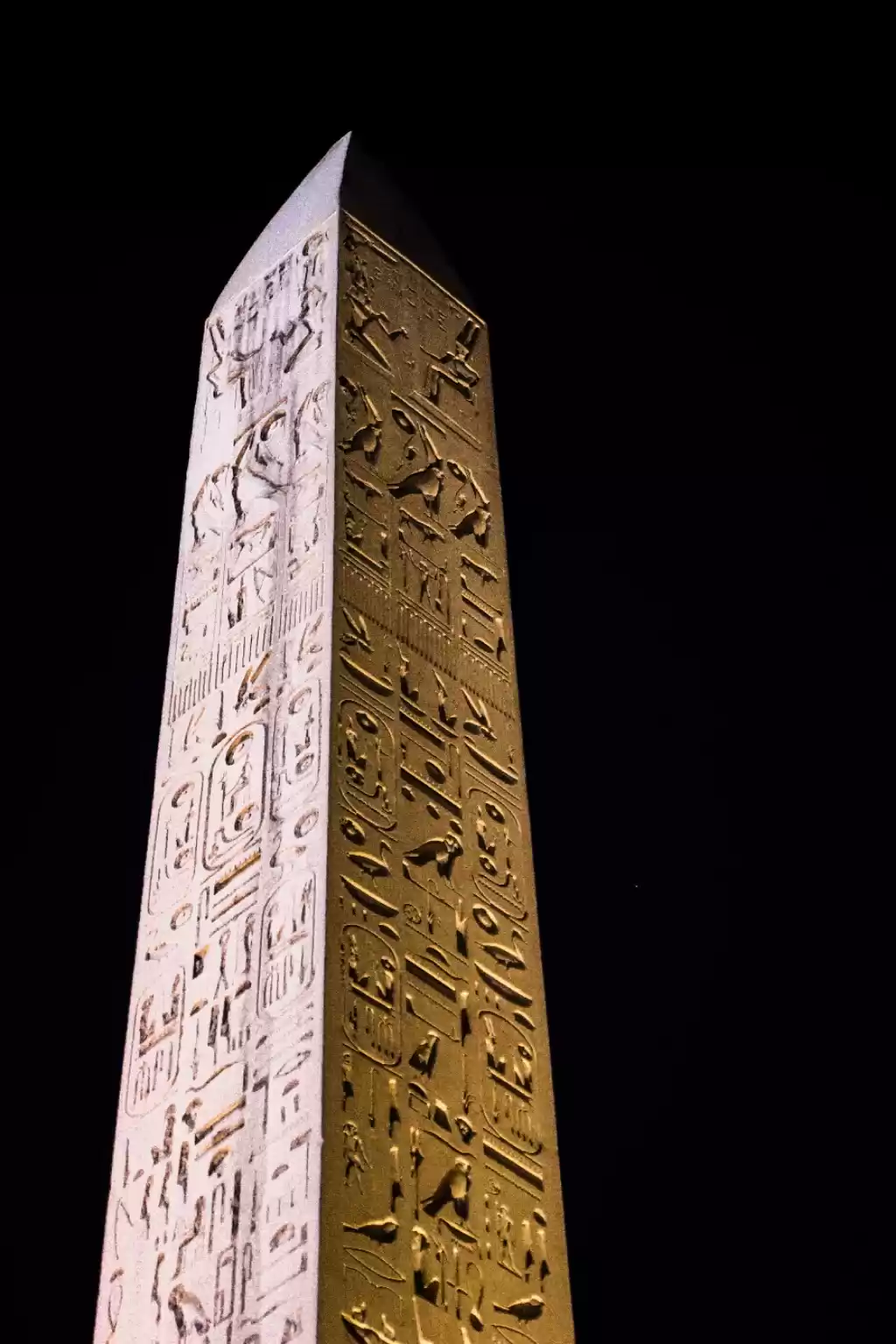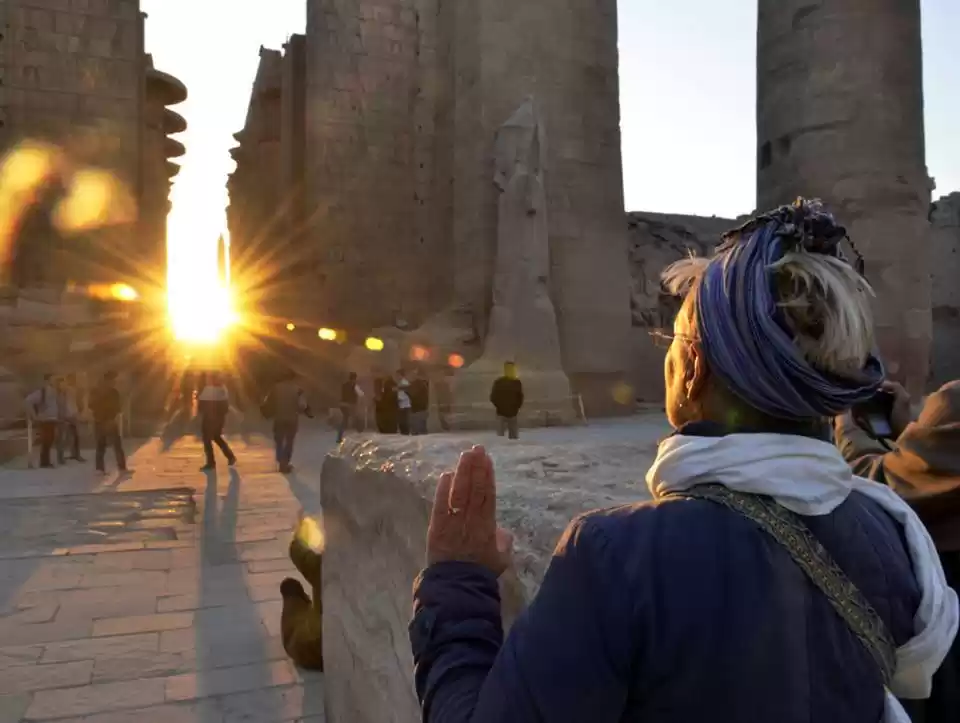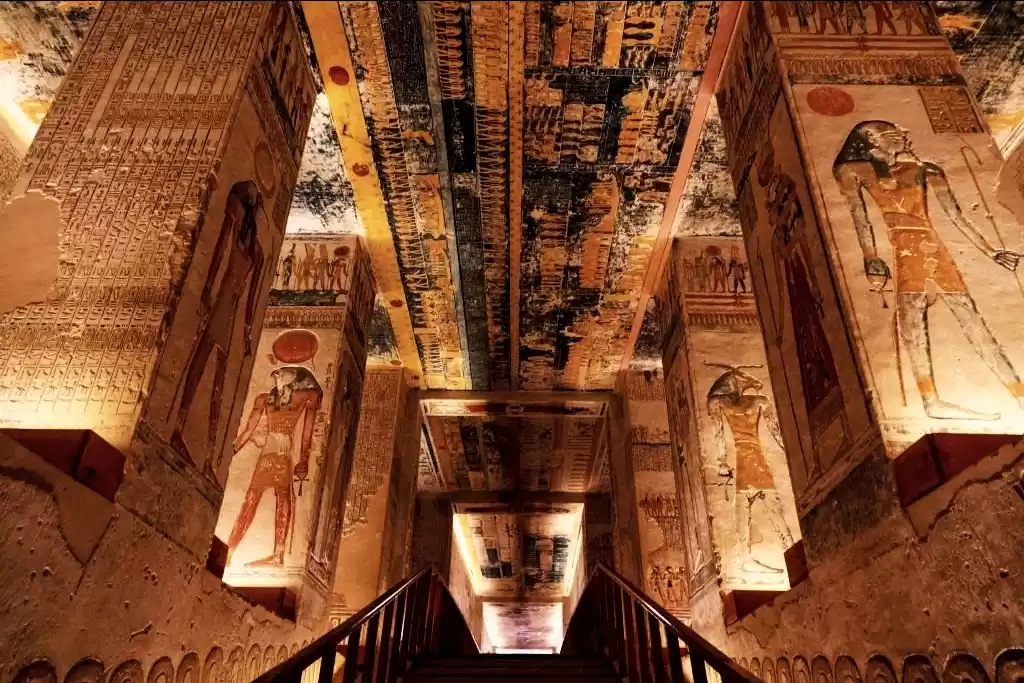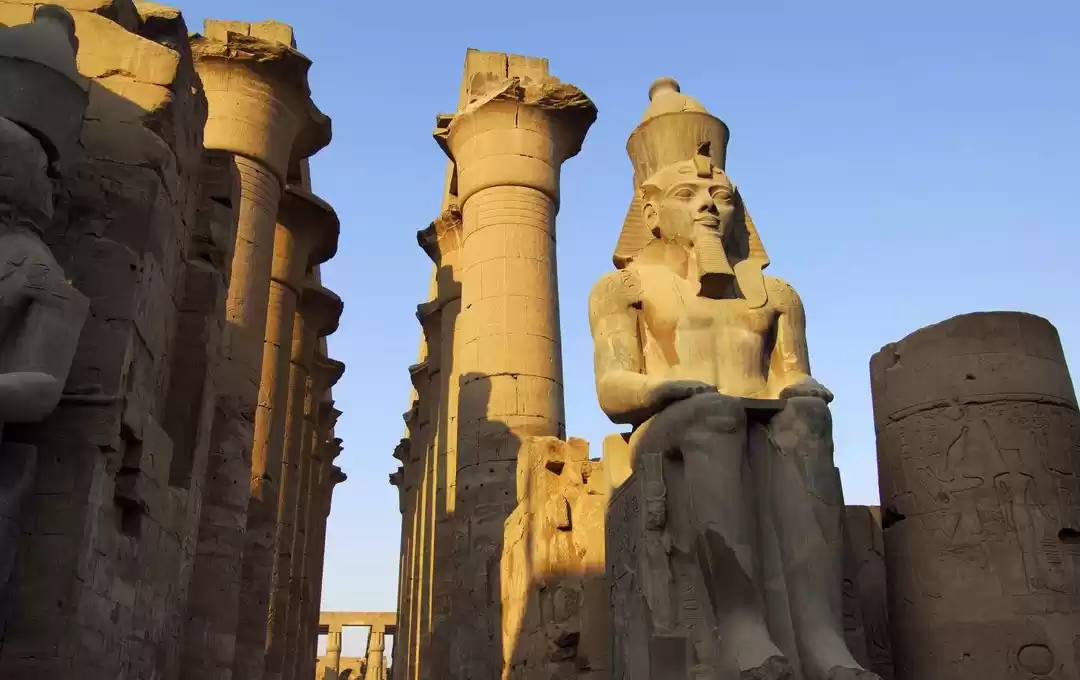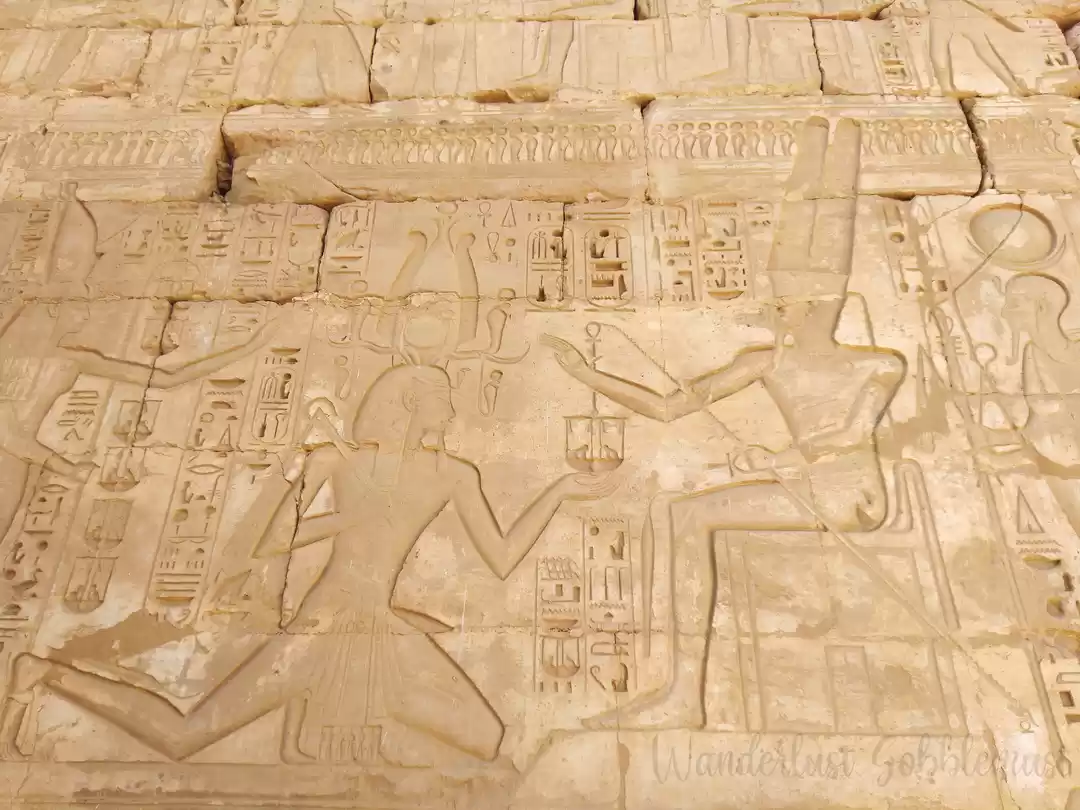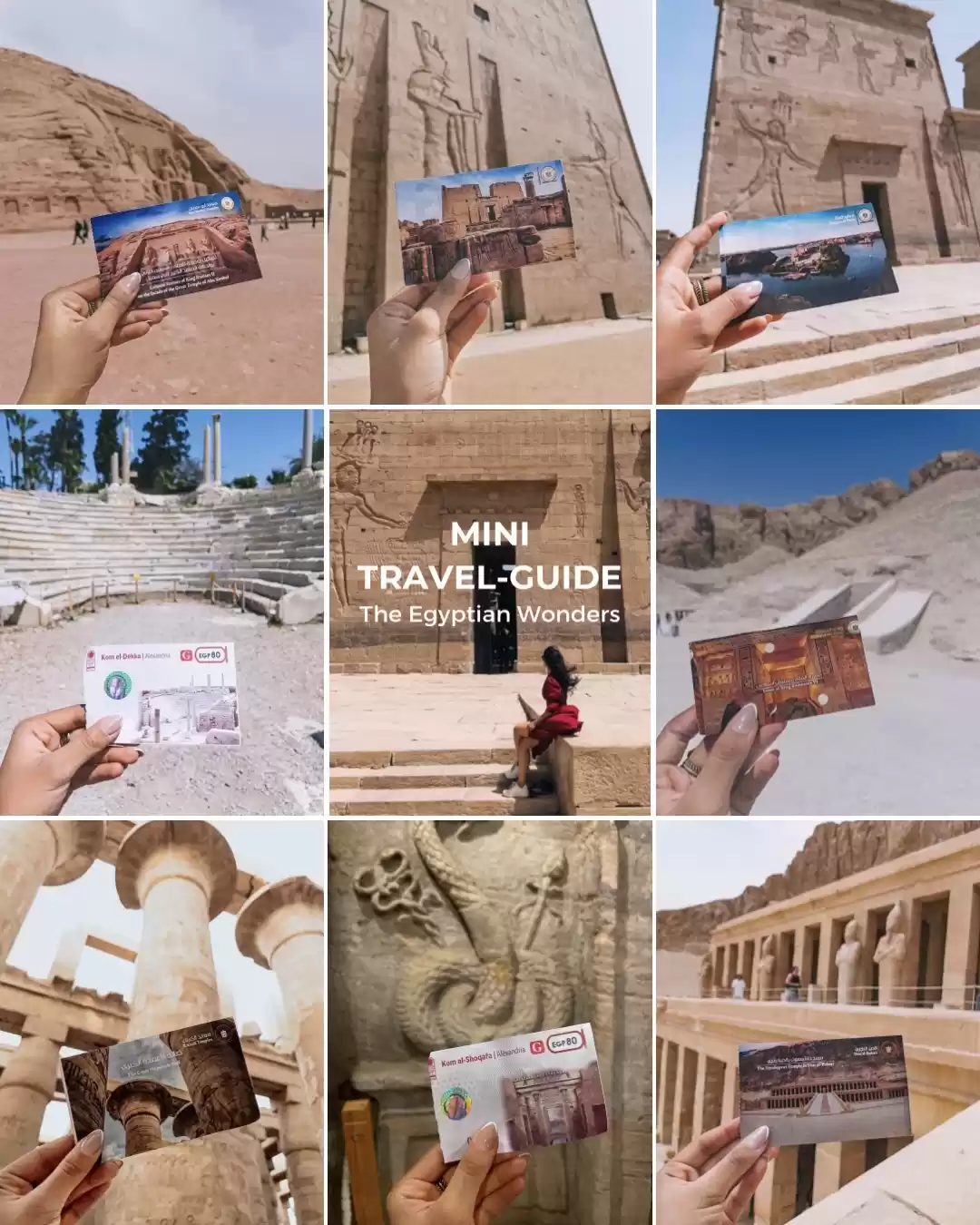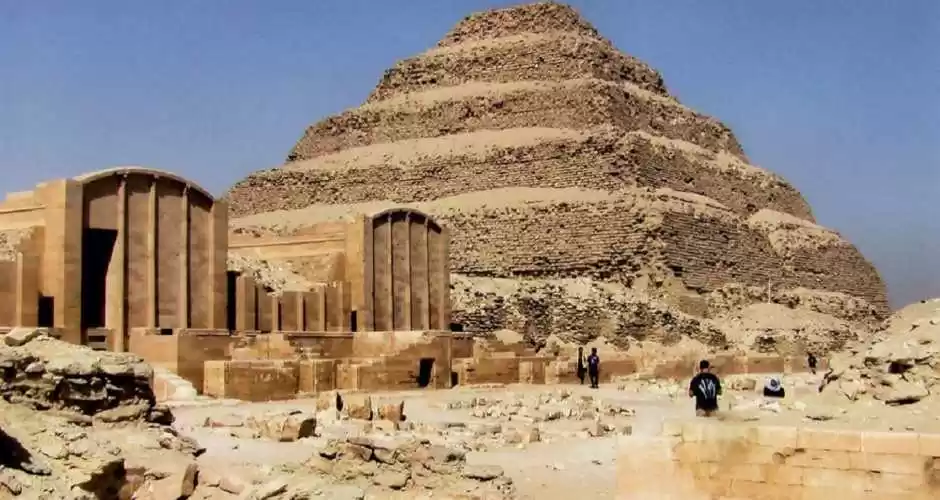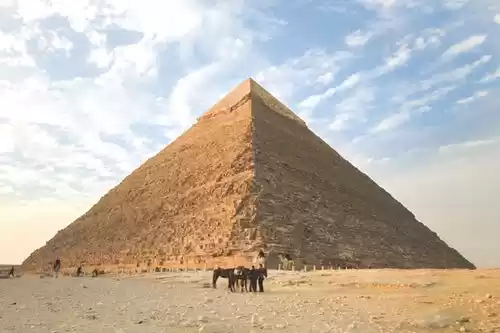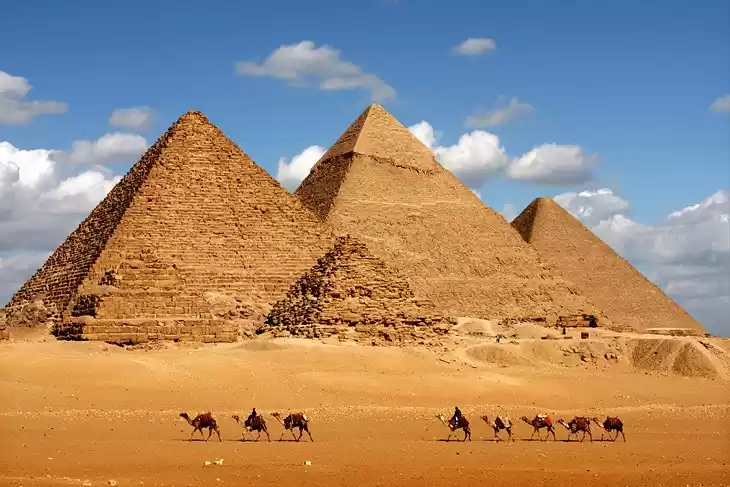Luxor Temple is one of the most impressive and fascinating monuments of ancient Egypt. Located on the east bank of the Nile River, Luxor Temple was built by some of the most powerful and famous pharaohs of history, such as Amenhotep III, Tutankhamun, and Ramses II. Luxor Temple is not only a stunning example of ancient architecture and art, but also a witness to the changing history and culture of Egypt, from the New Kingdom to the Roman Empire, and from the Islamic era to the modern day.
In this article, we will explore everything you need to know about Luxor Temple, from its history and architecture, to its activities and tips for visiting. Whether you are a history buff, a culture lover, or a curious traveler, Luxor Temple will surely amaze and inspire you.
Luxor Temple History
Luxor Temple was originally built by Amenhotep III, one of the most prolific builders of ancient Egypt, around 1400 BCE. He dedicated the temple to the god Amun, the king of the gods, and his consort Mut, the goddess of motherhood. Amenhotep III also built a large palace complex next to the temple, where he celebrated his jubilee festivals. His son and successor, Akhenaten, who introduced the monotheistic worship of the sun god Aten, abandoned Luxor Temple and moved his capital to Amarna.
However, after his death, his son Tutankhamun restored the traditional cult of Amun and added some decorations to Luxor Temple. The most significant expansion of Luxor Temple was done by Ramses II, the most powerful and celebrated pharaoh of the New Kingdom. He added a massive pylon, a colossal courtyard, and a row of statues and obelisks to the temple, and inscribed his military victories and achievements on the walls.
He also connected Luxor Temple with Karnak Temple, the largest temple complex in Egypt, by a 3 km long avenue of sphinxes. Later pharaohs, such as Horemheb, Seti I, and Ramses III, also made some additions and modifications to Luxor Temple.
Luxor Temple witnessed many changes and transformations throughout history. During the Late Period, the Nubian kings of the 25th dynasty conquered Egypt and added some reliefs and statues to Luxor Temple. During the Ptolemaic period, the Greek rulers of Egypt built a chapel for the god Serapis inside the temple. During the Roman period, the emperor Augustus converted part of the temple into a military camp and a cult center for the imperial cult. During the Christian era, the temple was converted into a church, and some of the ancient reliefs were plastered over or defaced. During the Islamic era, the temple was partially buried under sand and rubble, and a mosque was built inside the temple, dedicated to the local saint Abu al-Haggag. The mosque is still standing today, and is an interesting example of the coexistence of different religions and cultures in Luxor. Luxor Temple was rediscovered and excavated by various archaeologists and explorers in the 19th and 20th centuries, and is now one of the most visited and admired monuments of ancient Egypt.
Luxor Temple Architecture
Luxor Temple is a masterpiece of ancient architecture and art, with a complex and symmetrical design, a harmonious and elegant style, and a rich and diverse decoration. The temple consists of several sections and elements, each with its own features and functions. Here are some of the highlights of Luxor Temple architecture:

The Avenue of Sphinxes: This is the main entrance to Luxor Temple, and it is a spectacular sight to behold. The avenue is lined with hundreds of sphinxes, mythical creatures with the body of a lion and the head of a human or a ram. The sphinxes were symbols of royal power and protection, and they guarded the sacred way between Luxor Temple and Karnak Temple. The avenue was originally built by Amenhotep III, and later restored by Nectanebo I, the last native pharaoh of Egypt. Some of the sphinxes have the head of a ram, representing the god Amun, while others have the head of a human, representing the pharaoh.
The First Pylon: This is the massive gateway that leads to the temple, and it is the most prominent feature of Luxor Temple. The pylon was built by Ramses II, and it is decorated with colossal reliefs depicting his military campaigns and triumphs, especially against the Hittites at the Battle of Kadesh. The pylon also has four huge statues of Ramses II, two on each side, sitting on thrones and wearing the double crown of Upper and Lower Egypt. The statues are about 16 meters high, and they show the pharaoh’s majesty and authority. The pylon also has two obelisks, one of which is still standing, while the other was taken to Paris in the 19th century and is now displayed at the Place de la Concorde. The obelisks are made of pink granite, and they are about 25 meters high. They are inscribed with hieroglyphs praising the pharaoh and the god Amun.
The Court of Ramses II: This is the first open courtyard of the temple, and it is surrounded by a colonnade of 74 papyrus-shaped columns. The court was also built by Ramses II, and it is decorated with reliefs and statues depicting his religious and ceremonial activities, such as offering to the gods, celebrating festivals, and crowning his sons. The court also has a small chapel dedicated to the goddess Hathor, the goddess of love and joy. The chapel has a beautiful ceiling with astronomical motifs, and a sacred barque, a wooden boat that was used to carry the statue of the goddess during processions.
The Colonnade: This is the second open courtyard of the temple, and it is one of the most elegant and graceful parts of Luxor Temple. The colonnade was built by Amenhotep III, and it consists of 14 papyrus-shaped columns, arranged in two rows, with a roof supported by architraves. The colonnade is decorated with reliefs and inscriptions depicting the pharaoh’s jubilee festivals, or Heb-Sed, which were held every 30 years to renew his power and vitality. The colonnade also has a small shrine dedicated to the god Anubis, the god of mummification and the afterlife. The shrine has a statue of the god, with the head of a jackal and the body of a human, and a niche for offerings.
The Court of Amenhotep III: This is the third open courtyard of the temple, and it is the oldest and most original part of Luxor Temple. The court was built by Amenhotep III, and it is surrounded by a double colonnade of 32 papyrus-shaped columns. The court is decorated with reliefs and statues depicting the pharaoh and his family, as well as various gods and goddesses, such as Amun, Mut, Khonsu, Thoth, and Sobek. The court also has a large altar, where the pharaoh and the priests performed rituals and sacrifices to the gods.
The Hypostyle Hall: This is the main hall of the temple, and it is a magnificent and impressive space. The hall was built by Amenhotep III, and it consists of 32 papyrus-shaped columns, arranged in four rows, with a roof supported by architraves. The hall is decorated with reliefs and inscriptions depicting the pharaoh and the god Amun, as well as various scenes from the creation myth and the divine birth of the pharaoh. The hall also has a small chamber, where the statue of the god Amun was kept and worshipped.
The Barque Shrine: This is the most sacred and secluded part of the temple, and it is where the statue of the god Amun was placed during the annual Opet festival, which celebrated the union of Amun and Mut. The shrine was built by Tutankhamun, and it is made of alabaster, a translucent and precious stone. The shrine is decorated with reliefs and inscriptions depicting the pharaoh and the god Amun, as well as various offerings and symbols. The shrine also has a small opening, where the rays of the sun could enter and illuminate the statue of the god.
The Birth Room: This is a small and mysterious room, located next to the barque shrine, and it is where the pharaoh was believed to be conceived and born by the god Amun and his mother, Queen Mutemwiya. The room was built by Amenhotep III, and it is decorated with reliefs and inscriptions depicting the divine birth of the pharaoh, as well as his coronation and accession to the throne. The room also has a small window, where the star of Sirius, the brightest star in the sky, could be seen rising at the time of the pharaoh’s birth.
Luxor Temple Activities
Luxor Temple is not only a historical and cultural treasure, but also a lively and vibrant place, where visitors can enjoy various activities and experiences. Here are some of the things you can do at Luxor Temple:
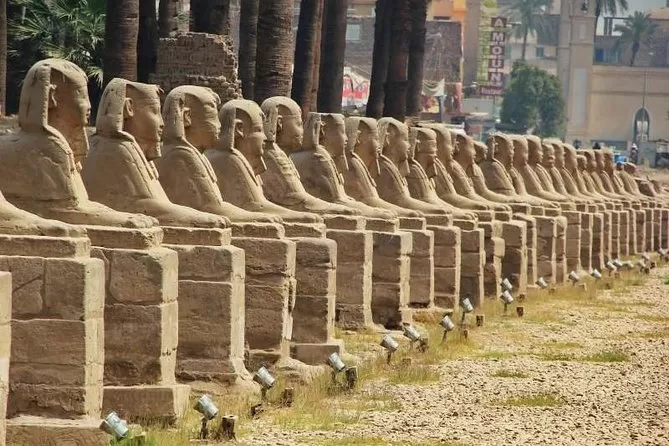
Watch the sound and light show:
This is a spectacular and magical show, where the temple is illuminated by colorful lights and lasers, and narrated by a voice that tells the story and secrets of Luxor Temple. The show is held every night, in different languages, and it lasts for about an hour. The show is a great way to see the temple in a different perspective, and to learn more about its history and legends.
Explore the temple at night:
This is a unique and enchanting experience, where you can see the temple in a different light, literally and figuratively. The temple is open until 9 pm, and it is less crowded and more peaceful at night. You can admire the temple’s architecture and art, and feel the atmosphere and energy of the ancient site. You can also take amazing photos of the temple, with the stars and the moon as your backdrop.
Take a guided tour:
This is a great way to learn more about the temple’s history and significance, and to get insights and stories from an expert guide. You can choose from different types of tours, such as private, group, or audio tours, and you can customize your itinerary and pace according to your preferences and interests. You can also ask questions and interact with your guide and fellow travelers, and make your visit more fun and informative.
Visit the Luxor Museum:
This is a must-see attraction for anyone interested in ancient Egyptian civilization and culture. The Luxor Museum is located near Luxor Temple, and it showcases a collection of artifacts and exhibits from the temples and tombs of Luxor, such as statues, mummies, jewelry, pottery, and weapons. The museum also has a special section dedicated to the cache of royal statues that were discovered in Luxor Temple in 1989, and that are considered among the finest examples of ancient Egyptian sculpture. The museum is open from 9 am to 9 pm, and it has a nominal admission fee.
Enjoy other activities and attractions in Luxor:
Luxor Temple is not the only thing to see and do in Luxor, which is often called the world’s largest open-air museum. Luxor has many other attractions and activities to offer, such as Karnak Temple, the Valley of the Kings, the Valley of the Queens, the Temple of Hatshepsut, the Memnon Colossi, the Medinet Habu, the Temple of Mut, and more. You can also enjoy other activities, such as camel rides, carriage rides, hot air balloon rides, boat trips, shopping, dining, and more. Luxor is a place where you can experience the best of ancient and modern Egypt, and where you can create unforgettable memories.
Luxor Temple is one of the most amazing and awe-inspiring monuments of ancient Egypt, and a must-visit destination for anyone traveling to Egypt. Luxor Temple is not only a historical and cultural treasure, but also a lively and vibrant place, where you can enjoy various activities and experiences. Whether you are a history buff, a culture lover, or a curious traveler, Luxor Temple will surely amaze and inspire you.
So, what are you waiting for? Book your trip to Luxor Temple today, and discover the wonders and secrets of this ancient Egyptian monument. And don’t forget to share your thoughts and feedback with us, we would love to hear from you. Thank you for reading, and happy travels!






